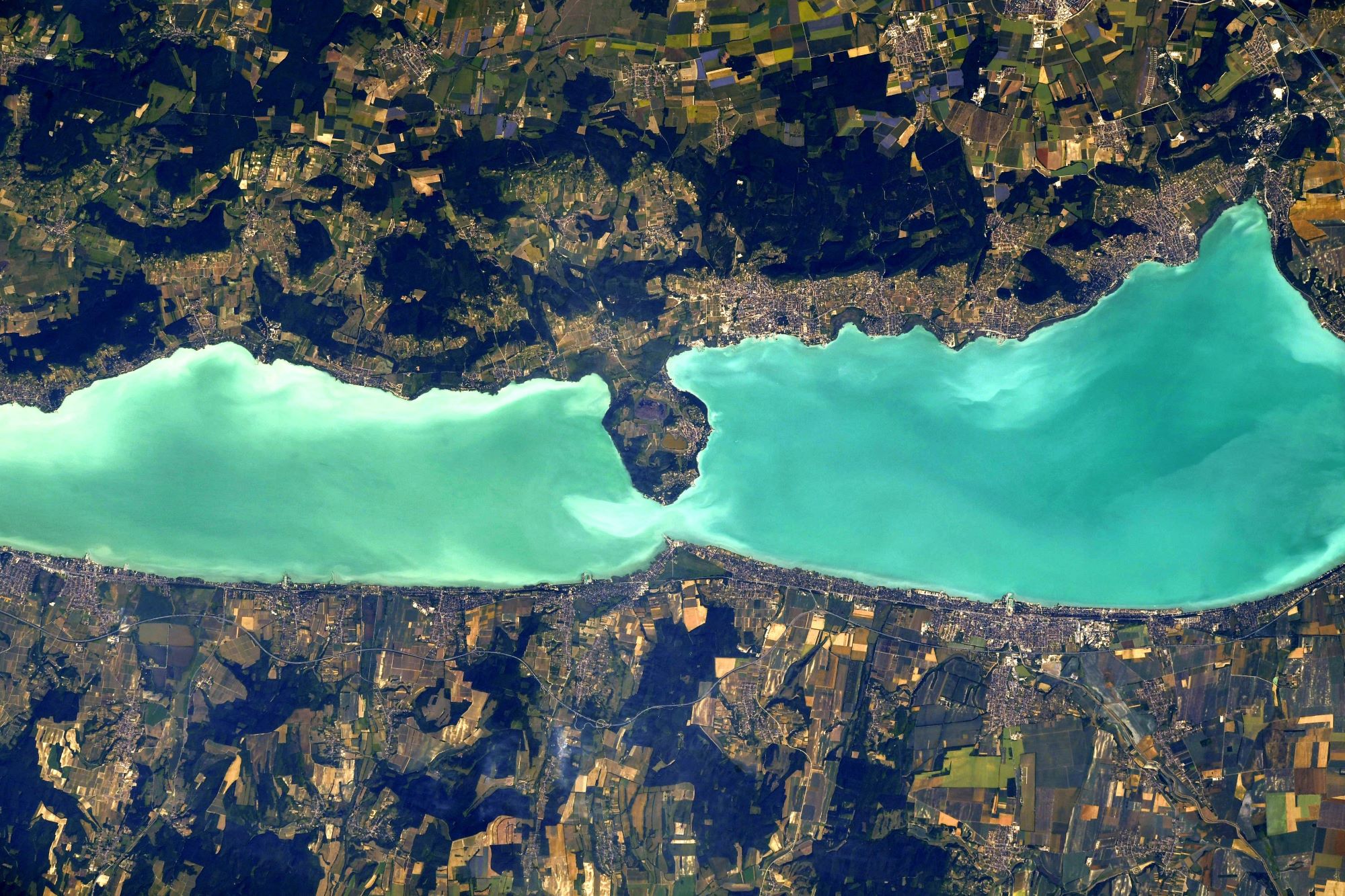[:ja]トマ・ペスケ宇宙飛行士がISSから撮影したハンガリーのバラトン湖です。

バラトン湖はハンガリー西部にある中央ヨーロッパ最大の湖で、スラブの言葉で湖沼を意味する「Blato」が語源と考えられています。バラトン湖はハンガリー高地の中央部に位置し、後期更新世の地殻陥没で形成されました。東西に長く広がり、長さ約78km、幅5-12km、最大水深約11m、平均水温20℃、夏の水温26-27℃で、冬季は水面が凍結します。平均水深は浅く、流域における土地利用の変化が顕著であるため、西部を中心に富栄養化が進んでいます。水面の色は淡いコバルトブルーで、水質は弱アルカリ性でマグネシウム、カルシウムなどの成分を含んでいます。50以上の河川がバラトン湖に流入し、湖水はシオ川からドナウ川に流れ出ます。バラトン湖は国際的な保養地として知られ、沿岸都市は湖水浴を楽しむ観光地として賑わっています。
地上の様子はこちらです。


参考文献: Thomas Pesquet’s Tweet
地球俯瞰画像を見る: LiVEARTH
[Earthview Wonders] No.1377: Lake Balaton, Hungary🇭🇺
Astronaut Thomas Pesquet captured from ISS Lake Balaton, Hungary.

Lake Balaton is a freshwater lake in the Transdanubian region of Hungary, and is the largest lake in Central Europe. The mountainous region of the northern shore is known both for its historic character and as a major wine region, while the flat southern shore is known for its resort towns. Lake Balaton affects the local area precipitation. The area receives approximately 5–7cm more precipitation than most of Hungary, resulting in more cloudy days and less extreme temperatures. The lake’s surface freezes during winters. The microclimate around Lake Balaton has also made the region ideal for viticulture. The Mediterranean-like climate, combined with the soil (containing volcanic rock), has made the region notable for its production of wines since the Roman period 2000 years ago.
The local scenery on the ground is as follows.
Reference: Thomas Pesquet’s Tweet
See earthview photo gallery: LiVEARTH[:]